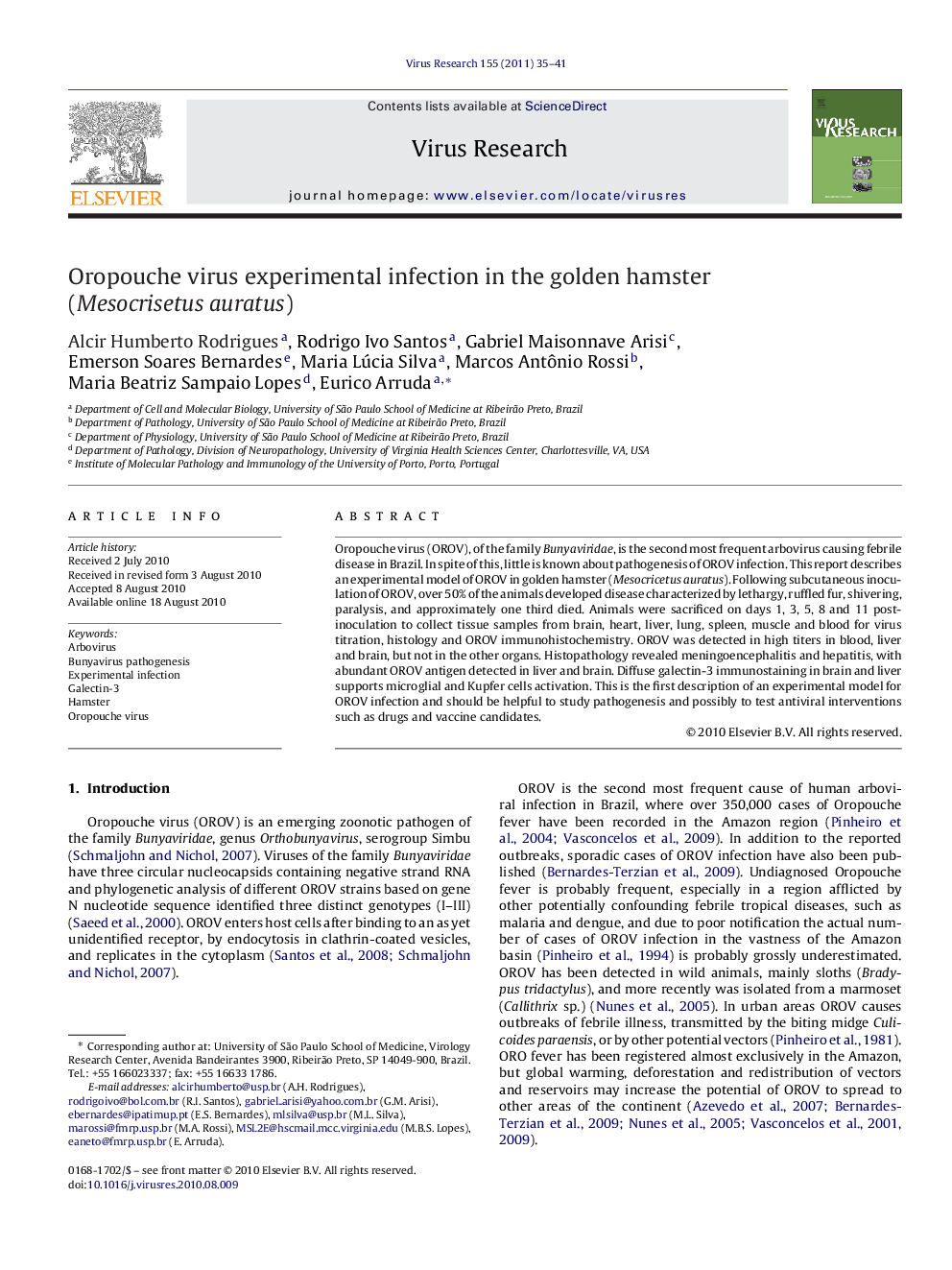| Article ID | Journal | Published Year | Pages | File Type |
|---|---|---|---|---|
| 3429043 | Virus Research | 2011 | 7 Pages |
Oropouche virus (OROV), of the family Bunyaviridae, is the second most frequent arbovirus causing febrile disease in Brazil. In spite of this, little is known about pathogenesis of OROV infection. This report describes an experimental model of OROV in golden hamster (Mesocricetus auratus). Following subcutaneous inoculation of OROV, over 50% of the animals developed disease characterized by lethargy, ruffled fur, shivering, paralysis, and approximately one third died. Animals were sacrificed on days 1, 3, 5, 8 and 11 post-inoculation to collect tissue samples from brain, heart, liver, lung, spleen, muscle and blood for virus titration, histology and OROV immunohistochemistry. OROV was detected in high titers in blood, liver and brain, but not in the other organs. Histopathology revealed meningoencephalitis and hepatitis, with abundant OROV antigen detected in liver and brain. Diffuse galectin-3 immunostaining in brain and liver supports microglial and Kupfer cells activation. This is the first description of an experimental model for OROV infection and should be helpful to study pathogenesis and possibly to test antiviral interventions such as drugs and vaccine candidates.
Research highlights▶ Hamsters develop systemic infection upon subcutaneous inoculation with Oropouche virus. ▶ Oropouche virus causes viremia and replicates mainly in brain and liver of infected animals. ▶ Neurons and hepatocytes positive for Oropouche virus antigen were diffusely dispersed. ▶ Disease of the central nervous system includes severe paralysis. ▶ Oropouche virus-infected hamsters had encephalitis and meningitis, with activation of microglia and Kupfer cells.
